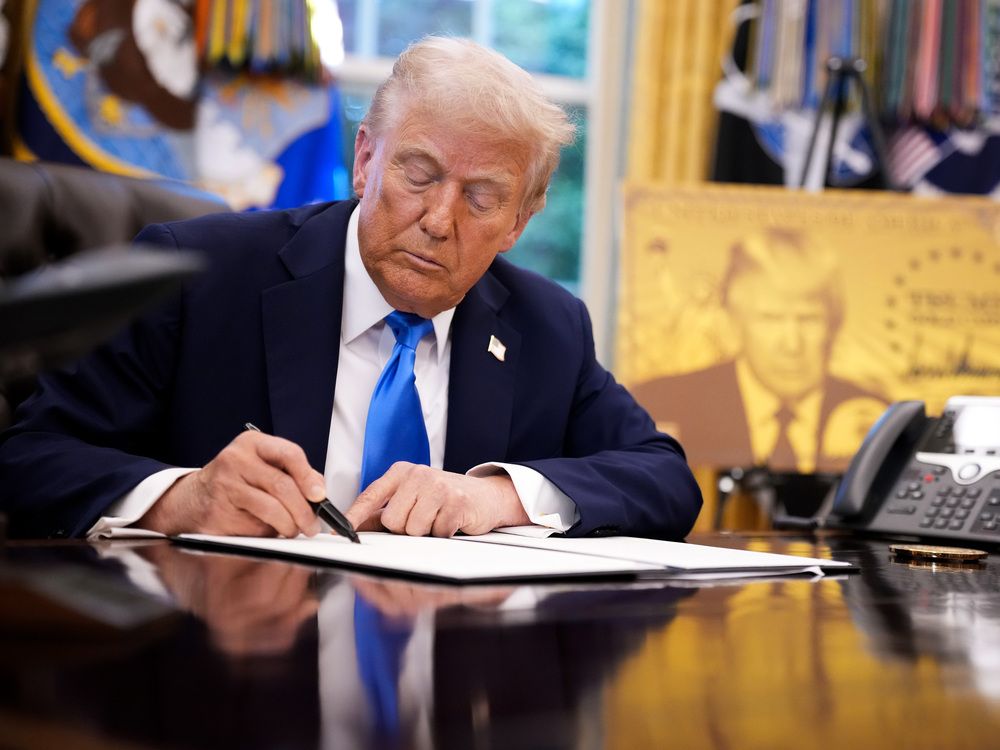
The United States just slapped a US$100,000 tax on foreign talent. That’s the new fee for the H-1B visa , up from its US$5,000 price tag, the U.S. non-immigrant work permit that engineers, scientists and other s cience, technology, engineering and mathematics (STEM) professionals have long used to build their careers — and, arguably, America. For Canada, this represents a once-in-a-generation opportunity to invite the best in.
Think of it like a game of musical chairs. For decades, the U.S. set out the biggest stage and the most seats, attracting the world’s brightest minds. Now, it’s yanked away a chunk of those chairs. But the music hasn’t stopped, and the players are still circling. Canada has a chance to add more seats and, in the process, change its economic future.
The H-1B pipeline shaped Silicon Valley as we know it. Chief executives Sundar Pichai of Google LLC, Satya Nadella of Microsoft Corp. and even Elon Musk all came through the border carrying this stamp in their passport. Seven of the 10 artificial intelligence (AI) scientists Meta Platforms Inc. lured with US$100-million-plus packages did, too. And add on the tens of thousands that come into the U.S. each year; it’s currently capped at 65,000. With that pipeline tightened, it may turn away the people who create industries.
Canada must act now. A Build Canada analysis shows that attracting just 120,000 of these displaced workers could add up to $30 billion in gross domestic product (GDP) in Canada. That’s a full percentage point of growth from talent alone.
The risk of inaction is equally stark. Canadian workers have a competitive hold. U.S. companies can still recruit Canadians through the TN visa, which remains a fast, cheap workaround without a big, new price tag. If we don’t move quickly, our own engineers, scientists and health-care professionals could be lured south, draining the very talent we need most.
Canada, however, already has advantages in place. Its Global Talent Stream processes work permits in as little as two to four weeks. It provides a straightforward path to permanent residency. And its system doesn’t wildly swing with every election cycle. That predictability matters when someone is deciding where to stake their future.
We’ve seen this effect firsthand at Neo Financial Technologies Inc. Since Trump’s “Liberation Day” in April, we’ve had a 250 per cent increase in applications from the U.S. compared to the period before. The demand is real, and it’s only going to grow.
On the flip side, some Canadians wonder if more foreign talent could squeeze out opportunities for local graduates. It’s a fair question. But the reality is we simply don’t have enough people to fill the roles that already exist in engineering, AI and especially health care.
According to the Government of Canada, the health-care sector had 78,600 unfilled positions in the third quarter of 2024, and nearly half of those vacancies remained open for more than 90 days. That’s not competition for jobs; that shows a system straining to function.
And highly skilled immigrants don’t shrink the pie when it comes to innovation; they expand it. They build companies that hire Canadians, raise productivity and launch startups that attract global investment. Talent attracts more talent. The best way to help Canadian graduates is by creating more world-class companies right here at home.
Other countries are already making moves. The United Kingdom, Australia and Singapore all see the same opportunity. If Canada hesitates, this wave of builders could pass us by.
Canada’s fix isn’t complicated. Reintroduce and expand the H-1B Open Work Permit program launched in 2023, but this time tie it to high-skill, hard-to-fill roles with salary thresholds that protect Canadian workers. Create an express track for graduates of the world’s top 100 universities, the same pipeline that once filled Silicon Valley. These steps would make Canada the obvious next destination for the world’s top builders.
I’ve seen what happens when ambitious people are given the chance to build. From SkipTheDishes Restaurant Services Inc. to Neo Financial, the formula is simple: when talent meets opportunity, companies grow and industries emerge. Our neighbours to the south just raised the cost of entry for foreign dreamers and doers; Canada can lower its barriers.
The chairs are shifting in the global game of talent. Canada has the chance to add more seats and invite the brightest minds in the world to sit down here.
Andrew Chau is the co-founder and chief executive of Neo Financial Technologies Inc.

